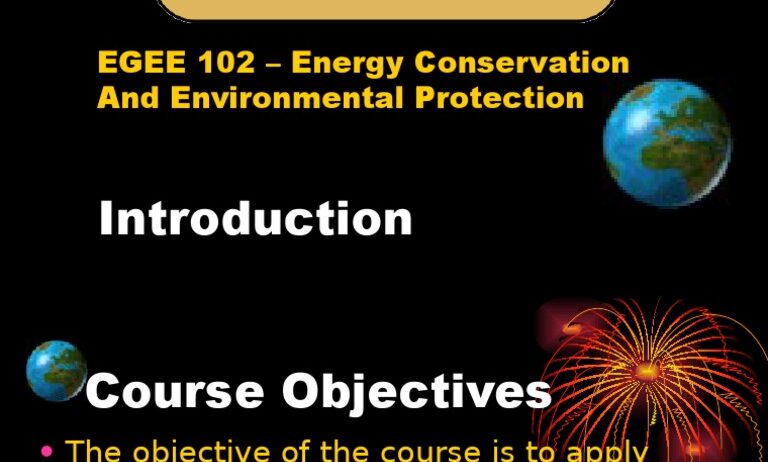Energy conservation is akin to a delicate dance, where every step must be calculated and purposeful. When we think of the Earth’s resources, we often visualize a vast ocean. This ocean is teeming with life and potential, but as we draw from its depths recklessly, we risk depleting its treasures. Therefore, understanding how to conserve energy is not merely a practical consideration; it is an urgent necessity that intertwines with environmental stewardship and sustainability.
At the heart of energy conservation lies the principle of efficiency. The idea is simple yet profound; it is about using less energy to achieve the same tasks. Much like a well-tuned orchestra, where every instrument plays its part seamlessly, so too can our energy consumption harmonize with nature’s rhythms. When appliances and systems operate at optimal capacities, they not only diminish waste but also extend the life of the resources upon which we rely.
Imagine if every household became a beacon of efficiency—an exemplar of conscientious energy use. Residential buildings account for a substantial portion of energy consumption. Air conditioning units can be likened to the body’s chill-inducing breath on a sweltering day; however, they require careful management. By using programmable thermostats and well-insulated structures, we can mitigate energy expenditure without sacrificing comfort. An energy-efficient home is like a well-drilled athlete, maintaining peak performance while minimizing unnecessary exertion.
Moreover, transitioning to renewable energy sources could be seen as planting seeds in a garden, nurturing them to flourish into a vibrant ecosystem. Solar panels, wind turbines, and geothermal systems represent the evolution of our energy paradigm, drawing power from the sun, wind, and Earth itself. These sources are inexhaustible, abundant, and far less detrimental to our atmosphere. Just as a garden requires diligent care and attention, so too does the integration of renewable technologies into our collective infrastructure. Investment in solar technology or local wind farms is not merely a financial decision; it is a commitment to sustain life itself.
On a broader scale, energy conservation can serve as a psychological catalyst for cultural change. Consider the humble light bulb—an everyday item that has revolutionized late-night productivity and comfort. However, traditional incandescent bulbs are notorious energy hogs. Embracing compact fluorescent lamps (CFLs) or light-emitting diodes (LEDs) is akin to graduating from grade school to higher education. They illuminate spaces more efficiently while consuming significantly less energy. More importantly, they embody a mindset shift, modeling an awareness of our ecological footprints that can inspire others to follow suit.
Incorporating energy-efficient practices will require individuals to make mindful decisions. This might involve crafting an energy conservation plan akin to weaving a tapestry—a meticulous procedure requiring attention to detail and collaboration. Just as diverse threads create a cohesive picture, a community that embraces energy conservation creates a collective impact. Engaging in community challenges to reduce energy use, such as “Earth Hour,” exemplifies the beauty of unified action toward a common goal.
Moreover, public transportation is an often-overlooked mechanism for improving energy efficiency. Cars are the singular vessels of independence, yet they contribute disproportionately to greenhouse gas emissions. By advocating for robust, efficient public transit systems, cities can reimagine the urban landscape. Picture city streets filled with electric buses and bike lanes thriving with commuters, a living testament to sustainable energy use. A transformed commuting culture promises not only reduced energy expenditure but also improved public health, as fewer vehicles equate to cleaner air.
Furthermore, individual action can precipitate significant environmental ramifications. Simple habits—turning off lights when leaving a room, using energy-efficient appliances, and even unplugging devices when not in use—can cumulatively yield astonishing results. These practices echo the timeless lesson of the tortoise and the hare; consistent, incremental changes lead to substantial gains over time. Small decisions can act as ripples in an expansive pond, fostering a wave of transformational change.
As we delve deeper into the complexities of energy conservation, it is essential to recognize the intersection of policy and personal responsibility. Legislation plays a critical role in shaping a sustainable future. Advocating for governmental incentives for energy-efficient upgrades or renewable energy installations is akin to sowing the seeds of change in fertile ground. Policies that promote sustainable energy practices and penalize wasteful ones can foster a culture of accountability. Change at the legislative level can amplify individual efforts, creating a powerful synergy that drives society forward.
In conclusion, energy conservation is not merely an option; it is an ethical imperative. The intricacies of conserving our Earth’s resources demand that we approach this topic with seriousness and dedication. The dance of energy efficiency, the cultivation of renewable resources, the shift in cultural attitudes, and the influence of policy intertwine to form a comprehensive framework for environmental stewardship. As we navigate this complex landscape, we must remain vigilant and proactive. Only by embracing energy conservation can we ensure a sustainable future for generations to come, protecting our planet’s ocean of resources and nurturing it for the vibrant life that it sustains.








